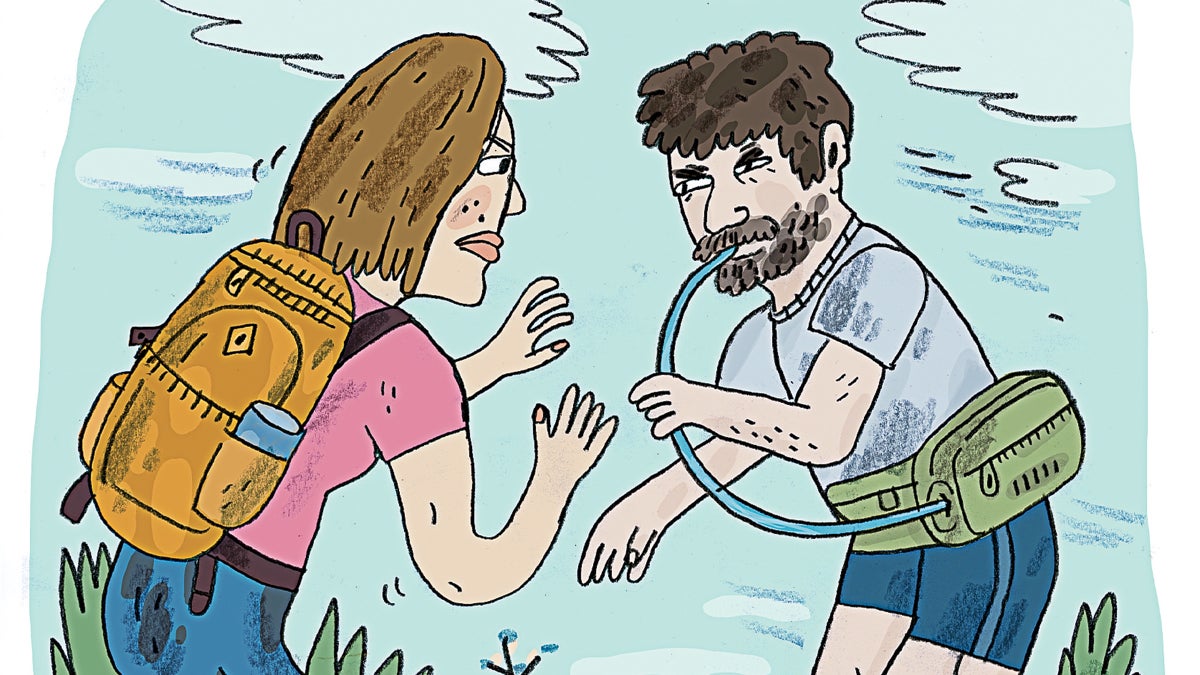No products in the cart.
Outdoor Adventure
Gear Debate: Backpack Versus Hip Pack
Backpacks Help Me Stay Prepared
By Annastasia Sewell
In the summer of 1995, my family headed to Wyoming’s Medicine Bow Peak for a quick 30-minute hike. Between all of us, we carried two granola bars in our pockets and three bottles of water in our hands. After seven hours, two boulder fields, and a lightning storm, I found myself limping across the vast wilderness, vowing never to leave the house without a fully stocked daypack again. I’d learned my lesson: any adventure can go awry.
And that’s exactly why I carry a backpack instead of a hip pack. Even a daypack has enough space to hold the absolute essentials (and more), while a hip pack is most lacking in precisely this area. My ten-liter Osprey Raven ($140) is more than ample: I can fit a water bottle, a first aid kit, food, layers, and a rotating cast of other supplies, depending on the terrain, weather, and time of the year. Additionally, no matter how modest the hike, I always fill the pack’s 2.5-liter hydration bladder. Try fitting one of those in a measly hip pack!
Fast-forward to last summer. As a result of heavy traffic on the trail, a planned six-mile hike with my dog turned into a 12-mile bushwhack during which we summited three peaks. We were able to make significant adjustments to our plans only because I had with me a fully loaded backpack—and it ended up being one of the most memorable days of the season. Bringing a bare minimum of supplies into the backcountry is not only dangerous, but it limits your ability to call an audible. And that’s why you will never see me on the trail without my overloaded, perfectly prepared daypack.
When Sewell isn’t hard at work as Outside’s shared-services manager, she’s in the mountains near Santa Fe with her dog and her daypack.
Hip Packs Are Minimal—but Accessible
By Zach Rachlin
The funny thing about a backpack is right there in the name—it’s on your back. I don’t know about you, but I can barely reach those pockets, let alone unzip a pocket and grab a snack, headphones, or keys without losing something valuable in the process. You may ask: Hey hardo, why don’t you just, like, take a quick break for that? Yet why should I bother when the humble hip pack exists, so that I can never stop never-stopping? The hip pack I use most frequently, Dakine’s five-liter Hot Laps ($90), is always conveniently at my fingertips, making it a no-brainer for day hiking, paddling, concertgoing, and traveling. It’s also my constant companion on bike rides, no matter how long or short the distance. I use it in fanny mode, with a two-liter bladder (measly indeed!), which keeps me hydrated and free of the back pain I inevitably sustain on any long ride with a backpack.
You might then ask: What about adventures requiring tons of stuff? Use both. The hip pack is ideal for backpacking; mine sits comfortably (I promise) lower than my backpack’s hipbelt, affording safe, accessible storage. And water refills are minimally invasive with the bladder placed at the hip; gone will be the days of completely emptying out your gear hauler to refit the bladder once replenished.
Try the hip pack alone, or in conjunction with the other kind, and you’ll never go back. You can thank me out on the trail with a celebratory hip-pack bump.
A software developer with a passion for splitboarding, biking, and backpacking, Rachlin can be found in and around Jackson, Wyoming, with his dog, Reece.
Source link

